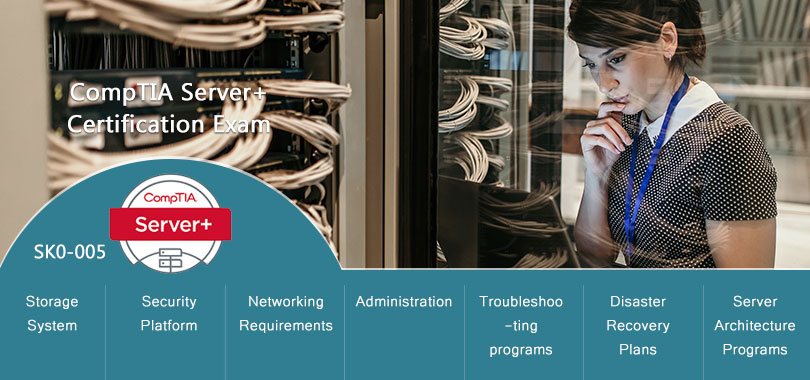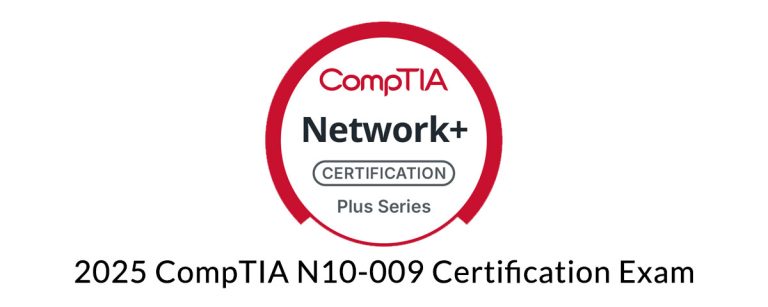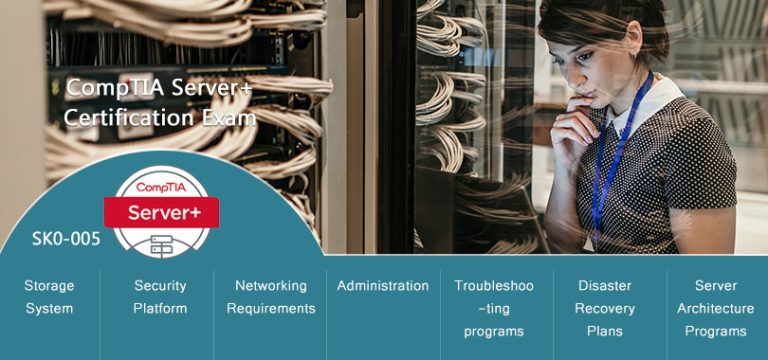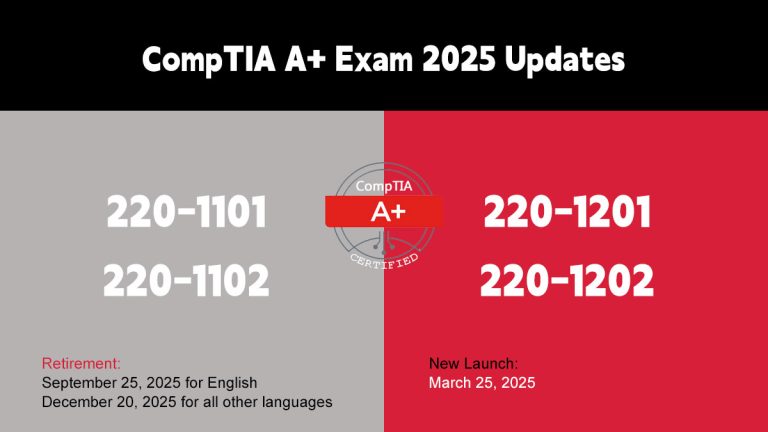
leads4pass SK0-005 dumps contain 550 latest exam questions and answers, and provide PDF and VCE learning methods, light and simple! The best CompTIA Server+ exam solution worth using.
leads4pass SK0-005 dumps have been sorted out, audited, and actually verified by the CompTIA Server+ solution team. They are true and effective. They meet the candidate certification exam requirements and are guaranteed to pass the exam 100%!
Using the latest SK0-005 exam questions and answers with PDF and VCE, please download the leads4pass SK0-005 dumps: https://www.leads4pass.com/pk0-005.html.
Share some CompTIA Server+ SK0-005 dumps exam questions for free:
| From | Number of exam questions | update time | Associated certification | Last Online Download | Last update |
| Leads4pass | 15 (New) | Aug 2025 | Server+,A+,Security+ … | SK0-005 PDF | SK0-005 Dumps |
Tips: We delete outdated content and share the latest materials
Question 1:
Which of the following types of locks utilizes key fobs or key cards held against a sensor/reader to gain access?
A. Bolting door lock
B. Combination door lock
C. Electronic door lock
D. Biometric door lock
Correct Answer: C
Question 2:
A storage administrator needs to implement SAN-based shared storage that can transmit at 16Gb over an optical connection. Which of the following connectivity options would BEST meet this requirement?
A. Fibre Channel
B. FCoE
C. iSCSI
D. eSATA
Correct Answer: A
The connectivity option that would best meet this requirement is Fibre Channel.
Fibre Channel is a high-speed network technology commonly used for storage area networks (SANs). It provides high-bandwidth, low-latency connectivity for storage devices over an optical connection. Fibre Channel supports speeds up to
16Gbps and is therefore the best option for meeting the requirement of transmitting at 16Gb over an optical connection.
FCoE (Fibre Channel over Ethernet) is a technology that encapsulates Fibre Channel frames within Ethernet frames for transmission over Ethernet networks, but it requires special hardware and is not widely adopted.
iSCSI (Internet Small Computer System Interface) is a storage networking standard that carries SCSI commands over IP networks. It is commonly used in smaller SAN environments, but it may not provide the same performance and reliability as Fibre Channel.
eSATA (External Serial Advanced Technology Attachment) is an external interface used to connect storage devices to computers, but it is not a networking technology and does not provide the same capabilities as Fibre Channel.
Question 3:
The management team has mandated the encryption of all server administration traffic. Which of the following should MOST likely be implemented?
A. SSH
B. VPN
C. SELinux
D. FTPS
Correct Answer: A
SSH stands for Secure Shell and it is a network protocol that provides encrypted and authenticated communication between two hosts. SSH can be used to remotely access and administer a server using a command-line interface or a graphical user interface.
SSH can ensure the encryption of all server administration traffic, which can prevent eavesdropping, tampering, or spoofing by unauthorized parties.
References:
https://www.comptia.org/training/resources/exam-objectives/comptia-server-sk0-005-exam-objectives (Objective 2.4)
Question 4:
A technician is trying to determine the reason why a Linux server is not communicating on a network. The returned network configuration is as follows:
eth0: flags=4163 mtu 1500 inet 127.0.0.1 network 255.255.0.0 broadcast 127.0.0.1
Which of the following BEST describes what is happening?
A. The server is configured to use DHCP on a network that has multiple scope options
B. The server is configured to use DHCP, but the DHCP server is sending an incorrect subnet mask
C. The server is configured to use DHCP on a network that does not have a DHCP server
D. The server is configured to use DHCP, but the DHCP server is sending an incorrect MTU setting
Correct Answer: C
The reason why the Linux server is not communicating on a network is that it is configured to use DHCP on a network that does not have a DHCP server. DHCP (Dynamic Host Configuration Protocol) is a protocol that allows a client device to obtain an IP address and other network configuration parameters from a DHCP server automatically.
However, if there is no DHCP server on the network, the client device will not be able to obtain a valid IP address and will assign itself a link-local address instead. A link-local address is an IP address that is only valid within a local network segment and cannot be used for communication outside of it.
A link-local address has a prefix of 169.254/16 in IPv4 or fe80::/10 in IPv6. In this case, the Linux server has assigned itself a link-local address of 127.0.0.1, which is also known as the loopback address.
The loopback address is used for testing and troubleshooting purposes and refers to the device itself. It cannot be used for communication with other devices on the network.
Question 5:
Which of the following, if properly configured, would prevent a user from installing an OS on a server? (Choose two)
A. Administrator password
B. Group Policy Object
C. Root password
D. SELInux
E. Bootloader password
F. BIOS/UEFI password
Correct Answer: EF
These are two methods that can prevent a user from installing an OS on a server if properly configured. A bootloader password is a password that protects the bootloader from unauthorized access or modification.
The bootloader is a program that loads the operating system into memory when the system boots up. If a user does not know the bootloader password, they cannot change the boot order or boot from another device such as a CD-ROM or USB drive that contains an OS installation media.
A BIOS/UEFI password is a password that protects the BIOS (Basic Input Output System) or UEFI (Unified Extensible Firmware Interface) from unauthorized access or modification.
The BIOS or UEFI is a firmware that initializes and configures the hardware components of the system before loading
Question 6:
Hackers recently targeted a company with an attack that resulted in a system breach, which compromised the organization\’s data. Because of the system breach, the administrator had to bypass normal change management procedures. Which of the following change management activities was necessary?
A. Cancelled change request
B. Change request postponement
C. Emergency change request
D. Privilege change request
E. User permission change request
Correct Answer: C
Explanation: An emergency change request is a type of change management activity that is used to address urgent issues that pose a significant risk to the organization, such as a system breach. An emergency change request requires immediate action and approval, and it may bypass some of the normal change management procedures, such as testing, documentation, or stakeholder communication12.
References =
1: Change Management Plans: A Definitive Guide Indeed(https://www.indeed.com/career-advice/career-development/change-management- activities)
2: The 10 Best Change Management Activities – Connecteam(https:// connecteam.com/top-10-change-management-activities/)
Question 7:
A server administrator needs to implement load balancing without purchasing any new hardware or implementing any new software. Which of the following will the administrator MOST likely implement?
A. Round robin
B. Link aggregation
C. Most recently used
D. Heartbeat
Correct Answer: A
Question 8:
Several new components have been added to a mission-critical server, and corporate policy states all new components must meet server hardening requirements. Which of the following should be applied?
A. Definition updates
B. Driver updates
C. OS security updates
D. Application updates
Correct Answer: B
Driver updates should be applied to the new components that have been added to a mission-critical server, as part of the server hardening requirements.
Drivers are software programs that enable the communication and functionality of hardware devices, such as network cards, storage controllers, or graphics cards.
Updating drivers can improve the performance, compatibility, and stability of the new components with the server operating system and applications.
References: CompTIA Server+ Certification Exam Objectives, Domain 2.0: Hardware, Objective 2.2: Given a scenario, install, configure and maintain server components.
Question 9:
A server administrator is configuring a new server that will hold large amounts of information. The server will need to be accessed by multiple users at the same time. Which of the following server roles will the administrator MOST likely need to install?
A. Messaging
B. Application
C. Print
D. Database
Correct Answer: D
Few people are expected to use the database at the same time and users don\’t need to customize the design of the database.
The server role that the administrator will most likely need to install for a server that will hold large amounts of information and will need to be accessed by multiple users at the same time is database.
A database is a collection of structured data that can be stored, queried, manipulated, and analyzed using various methods and tools. A database server is a server that hosts one or more databases and provides access to them over a network.
A database server can handle large amounts of information and support concurrent requests from multiple users or applications.
Question 10:
Which of the following refers to the requirements that dictate when to delete data backups?
A. Retention policies
B. Cloud security impact
C. Off-site storage
D. Life-cycle management
Correct Answer: A
Retention policies are the guidelines that dictate when to delete data backups based on operational or compliance needs. They specify how long, how, where, and in what format the data backups are stored, and who has authority over them. The other options are not directly related to the deletion of data backups.
https://backup.ninja/news/Database-Backups-101-Backup-Retention-Policy-Considerations
Question 11:
A legacy application server uses Telnet to allow administrators to manage it remotely. A recent security policy is denying access to any Telnet connections. Which of the following should the administrator use to manage the machine remotely via a terminal in the most secure manner?
A. RDP
B. Console
C. SSH
D. SFTP
Correct Answer: C
Question 12:
A new company policy requires that any lost functionality must be restored within 24 hours in the event of a disaster. Which of the following describes this policy requirement?
A. MTBF
B. RTO
C. MTTR
D. RPO
Correct Answer: B
Question 13:
A server administrator is using remote access to update a server. The administrator notices numerous error messages when using YUM to update the applications on a server. Which of the following should the administrator check FIRST?
A. Network connectivity on the server
B. LVM status on the server
C. Disk space in the /var directory
D. YUM dependencies
Correct Answer: C
The administrator should check disk space in the /var directory first when using YUM to update applications on a server.
YUM stands for Yellowdog Updater Modified, which is a software package manager for Linux systems that use RPM (Red Hat Package Manager) packages.
YUM downloads and installs packages from online repositories and resolves dependencies automatically.
YUM stores its cache files in the /var/cache/yum directory by default. These cache files include metadata and package data for each repository that YUM uses.
If there is not enough disk space in the /var directory, YUM may fail to update applications and generate error messages.
Question 14:
A user logs in to a Linux server and attempts to run the following command:
sudo emacs /root/file
However, the user gets the following message:
User userid is not allowed to execute `emacs\’ on this server.
Which of the following would BEST allow the user to find out which commands can be used?
A. visudo | grep userid
B. sudo -1 -U userid
C. cat /etc/passwd
D. userlist | grep userid
Correct Answer: B
The BEST option to allow the user to find out which commands can be used is option B: sudo -1 -U userid.
This command allows the user to run a shell with the privileges of the specified user (-U userid) while preserving their own environment (-i).
This means that the user will be able to see the commands they are authorized to run, and also allows them to test running those commands as the authorized user.
Option A (visudo | grep userid) runs the visudo command with the intention of displaying the sudoers file contents that have configuration options for the specified user, but it will not show the available commands.
Option C (cat /etc/passwd) shows the contents of the /etc/passwd file, which contains user account information including usernames, user IDs, home directories, and login shells. However, it will not show the commands that the user can run.
Option D (userlist | grep userid) does not seem to be a valid command and would not help the user find the available commands they can run.
Question 15:
Users in an office lost access to a file server following a short power outage. The server administrator noticed the server was powered off. Which of the following should the administrator do to prevent this situation in the future?
A. Connect the server to a KVM
B. Use cable management
C. Connect the server to a redundant network
D. Connect the server to a UPS
Correct Answer: D
The administrator should connect the server to a UPS to prevent this situation in the future.
A UPS (Uninterruptible Power Supply) is a device that provides backup power to a server or other device in case of a power outage or surge.
A UPS typically consists of one or more batteries and an inverter that converts the battery power into AC power that the server can use.
A UPS can also protect the server from power fluctuations that can damage its components or cause data corruption.
By connecting the server to a UPS, the administrator can ensure that the server will continue to run or shut down gracefully during a power failure.
…
The CompTIA Server+ certification includes server assistance from six key IT areas, which are important certifications in computer hardware, software, storage, IT environments, disaster recovery, and troubleshooting!
Take part in this exercise to learn about the latest CompTIA Server+ SK0-005 exam questions and answers to help you improve your professional skills! Learn more about six key IT domains!
Now download CompTIA Server+ Best Exam Method: Leads4pass SK0-005 dumps https://www.leads4pass.com/sk0-005.html (550 Q&A), use PDF or VCE to help you learn easily,
Successfully passed the CompTIA Server+ certification exam.



